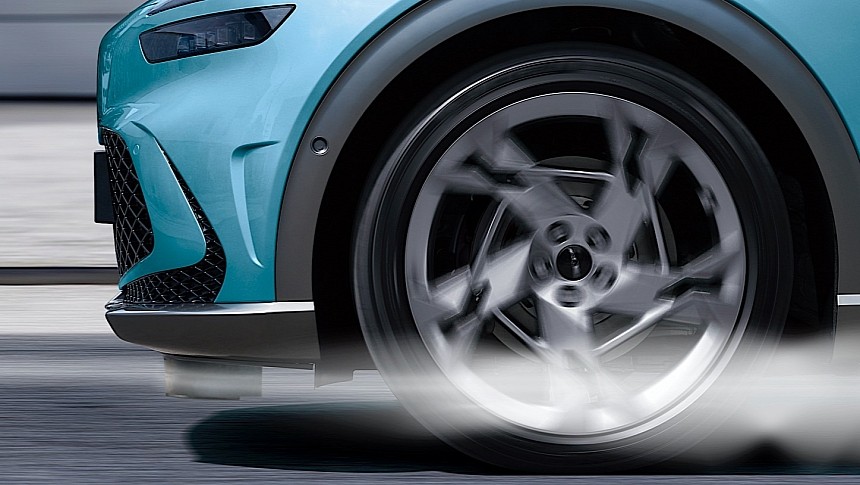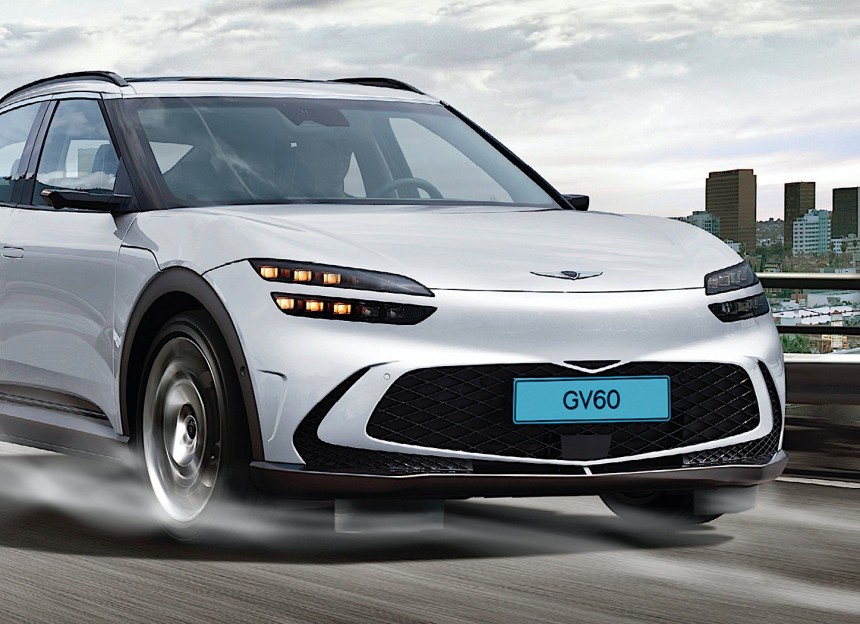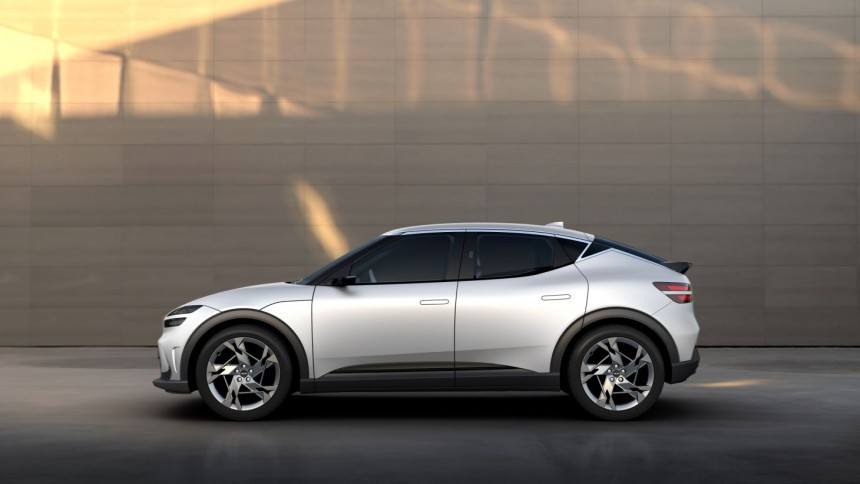The two major South Korean carmakers that also happen to be partners in crime, Hyundai and Kia, kicked off the new year with a bang. And by that I don't mean they've presented some kind of new and revolutionary vehicle, but a series of technologies that should make driving a lot easier and possibly even more fun.
It all started with the presentation of something called the integrated snow chains. Not chains per se, but meant to make driving over snow and slippery surfaces easier, the tech uses a shape memory alloy integrated into the tire itself. That means they are always fitted, but only come out when they're needed.
Then we got word of Samsung's SmartThings tech expanding into Hyundai and Kia vehicles to give them true Internet of Things (IoT) capabilities. It's a system that will allow owners to control some of their car's systems while in the house, and part of the house tech from inside the car.
And now comes the Active Air Skirt (AAS). What is that, you ask? In a nutshell, we're talking about a piece of technology meant to allow electric vehicles to drive faster and for longer. Here's how.
You all know how the range of electric vehicles is affected by a variety of factors, no matter how capable the battery is. Even things that may seem as trivial as air have an impact: it's aerodynamic resistance, which means the faster one drives, the more air opposes the forward motion. As a result, the car needs to fight harder to move, thus needing more juice.
There are several ways around that, the most obvious being the design of the car's body itself. But as per Hyundai and Kia, for instance, additional new tech could help with that as well.
The AAS is nothing more than a set of deployable shields. We're not told what it's made of, but we do know it goes between the front bumper and the front wheels. It stays out of sight when not needed, but when the speed reaches a certain point, it deploys to control the airflow entering through the lower part of the bumper.
In this way the system has an impact on the turbulence created around the wheels by directing air away from a frontal collision with the spinning tire, and sending it around the vehicle.
The AAS was developed with the Hyundai Electric Global Modular Platform (E-GMP) platform in mind, and it is the specific requirements of this platform that led to the ASS being installed only in front of the tires. More to the point, because the E-GMP is flat the system is most effective this way, and also contributes to enhancing downforce.
As long as the vehicle travels at speeds of under 50 mph (80 kph), the AAS is hidden, so you have no idea it's there. Once that threshold is reached, the pair of AAS comes down and it stays so until the speed drops again to 43 mph (70 kph). The difference in speeds is called for by the need to "prevent frequent operation in specific speed ranges."
As per its makers, it can be used at speeds that can be as high as 124 mph (200 kph) thanks to the fact rubber was applied on the lower part to reduce the risk of incoming high-speed objects damaging the system.
The tech has already been put through its paces on the first-ever vehicle built on the E-GMP platform, the Genesis GV60. During tests, Hyundai and Kia engineers found that the AAS helps reduce drag by as much as 2.8 percent. That may not seem like a lot, but it could translate into a range improvement of as much as four miles (six km). And in extreme cases, that distance can mean a lot.
Aside from all of the above, the Active Air Skirts are also expected to have an impact on driving stability and wind noise. Further research into that will reveal more.
The tech is not something made just for the sake of it. As per the two carmakers, patents for the AAS are already pending in both the United States and South Korea. At some undisclosed point in the future, when all the data has been gathered, Hyundai and Kia plan to launch the system into production.
We're to expect this thing to make its way first and foremost on electric SUVs. Because of their nature, these vehicles are harder to style in such a way as to increase aerodynamic performance, so any additional feature that may help with that is of course welcome.
The AAS will not take existing aerodynamic enhancers out of the equation, so we can continue to expect to see stuff like rear spoilers, active air flaps, air curtains for the wheels, and even separation traps on Hyundai and Kia cars that have and need them.
Then we got word of Samsung's SmartThings tech expanding into Hyundai and Kia vehicles to give them true Internet of Things (IoT) capabilities. It's a system that will allow owners to control some of their car's systems while in the house, and part of the house tech from inside the car.
And now comes the Active Air Skirt (AAS). What is that, you ask? In a nutshell, we're talking about a piece of technology meant to allow electric vehicles to drive faster and for longer. Here's how.
You all know how the range of electric vehicles is affected by a variety of factors, no matter how capable the battery is. Even things that may seem as trivial as air have an impact: it's aerodynamic resistance, which means the faster one drives, the more air opposes the forward motion. As a result, the car needs to fight harder to move, thus needing more juice.
There are several ways around that, the most obvious being the design of the car's body itself. But as per Hyundai and Kia, for instance, additional new tech could help with that as well.
In this way the system has an impact on the turbulence created around the wheels by directing air away from a frontal collision with the spinning tire, and sending it around the vehicle.
The AAS was developed with the Hyundai Electric Global Modular Platform (E-GMP) platform in mind, and it is the specific requirements of this platform that led to the ASS being installed only in front of the tires. More to the point, because the E-GMP is flat the system is most effective this way, and also contributes to enhancing downforce.
As long as the vehicle travels at speeds of under 50 mph (80 kph), the AAS is hidden, so you have no idea it's there. Once that threshold is reached, the pair of AAS comes down and it stays so until the speed drops again to 43 mph (70 kph). The difference in speeds is called for by the need to "prevent frequent operation in specific speed ranges."
As per its makers, it can be used at speeds that can be as high as 124 mph (200 kph) thanks to the fact rubber was applied on the lower part to reduce the risk of incoming high-speed objects damaging the system.
The tech has already been put through its paces on the first-ever vehicle built on the E-GMP platform, the Genesis GV60. During tests, Hyundai and Kia engineers found that the AAS helps reduce drag by as much as 2.8 percent. That may not seem like a lot, but it could translate into a range improvement of as much as four miles (six km). And in extreme cases, that distance can mean a lot.
The tech is not something made just for the sake of it. As per the two carmakers, patents for the AAS are already pending in both the United States and South Korea. At some undisclosed point in the future, when all the data has been gathered, Hyundai and Kia plan to launch the system into production.
We're to expect this thing to make its way first and foremost on electric SUVs. Because of their nature, these vehicles are harder to style in such a way as to increase aerodynamic performance, so any additional feature that may help with that is of course welcome.
The AAS will not take existing aerodynamic enhancers out of the equation, so we can continue to expect to see stuff like rear spoilers, active air flaps, air curtains for the wheels, and even separation traps on Hyundai and Kia cars that have and need them.




























